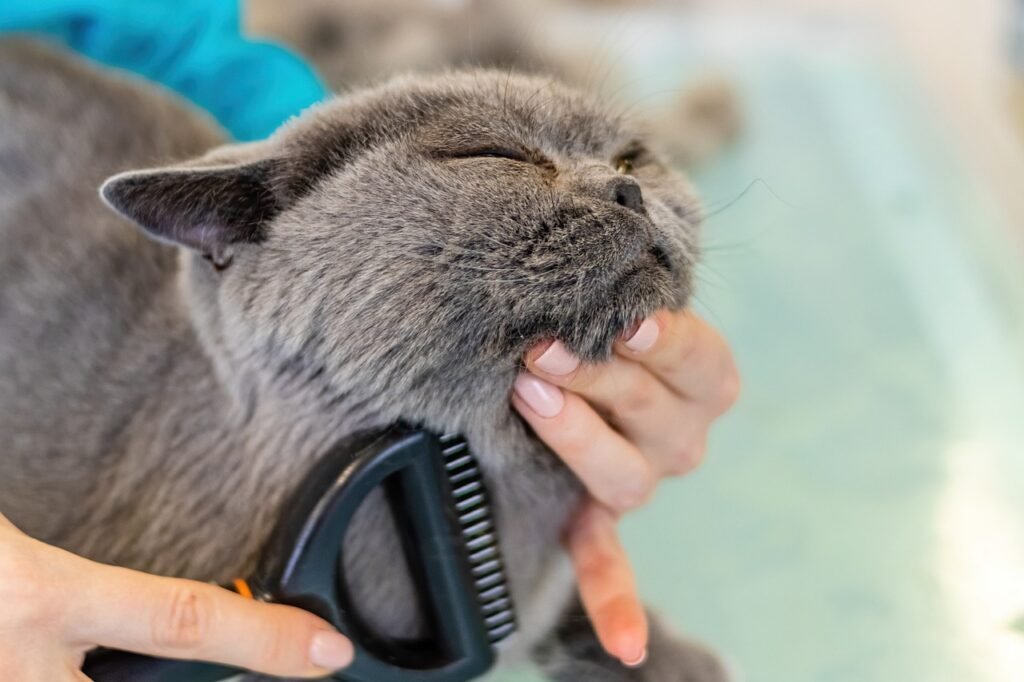
Cats are naturally clean animals, often spending a significant amount of their day grooming themselves. However, as a responsible pet owner, it is essential to assist your feline friend in maintaining optimal grooming and hygiene standards. This guide will provide you with comprehensive insights into effective cat grooming and hygiene practices.
The Importance of Cat Grooming
Grooming is more than just keeping your cat looking good; it is crucial for their overall health and well-being. Regular grooming helps prevent hairballs, reduces the risk of skin infections, and allows for early detection of health issues such as lumps or parasites. Additionally, grooming strengthens the bond between you and your pet.
Essential Cat Grooming Tools
To groom your cat effectively, you’ll need the right set of tools. Here are some essentials:
- Brushes and Combs: Choose a brush or comb suitable for your cat’s fur type. Long-haired breeds require different tools than short-haired ones.
- Scissors and Clippers: Invest in a pair of scissors or clippers designed specifically for pet grooming to safely trim your cat’s fur.
- Nail Clippers: Regular nail trimming is crucial for preventing overgrowth and potential injuries.
- Shampoo and Conditioner: Use cat-specific grooming products to keep their coat clean and healthy.
- Ear and Eye Cleaning Supplies: Use gentle solutions and cotton pads to clean sensitive areas.
Choosing the Right Brush
The type of brush you choose should depend on your cat’s coat:
- Slicker Brush: Great for removing loose fur and preventing matting in medium to long-haired cats.
- Bristle Brush: Suitable for short-haired cats to remove loose hair and stimulate skin circulation.
- Pin Brush: Ideal for long-haired cats, helping to detangle and smoothen the coat.
- Flea Comb: Useful for detecting and removing fleas and flea dirt.
Grooming Techniques and Best Practices
Understanding the best practices for grooming your cat can make the process smoother and more enjoyable for both of you.
Brushing
Start grooming sessions with brushing. This helps remove loose fur and prevents mat formation:
- Brush your short-haired cat once a week using a bristle brush.
- Long-haired cats may require daily brushing with a slicker or pin brush to prevent tangles and mats.
- Always brush in the direction of hair growth to avoid discomfort.
Bathing
While cats are excellent self-groomers, occasional baths can be beneficial, especially if they get into something dirty or are shedding excessively:
- Use lukewarm water and ensure the room is warm to prevent chilling.
- Apply cat-friendly shampoo, avoiding the face and ears.
- Rinse thoroughly to remove all shampoo residue.
- Dry your cat with a towel and keep them in a warm place until completely dry.
Nail Trimming
Regular nail trimming reduces the risk of overgrown nails and potential injuries:
- Use sharp, cat-specific nail clippers.
- Hold your cat gently and extend one paw at a time.
- Trim only the tip, avoiding the pink area known as the quick, which is sensitive and can bleed.
Ear and Eye Cleaning
Maintaining clean ears and eyes helps prevent infections:
- Check your cat’s ears weekly for dirt, wax, or unusual odors.
- Use a vet-recommended cleaning solution and a cotton pad to clean the ears gently.
- For eyes, use a damp cotton pad to wipe away any discharge.
Special Considerations for Different Breeds
Each cat breed may have unique grooming needs:
- Persians: Require daily brushing due to their long, dense fur, which is prone to matting.
- Sphynx: Need regular baths due to their lack of fur and oil build-up on their skin.
- Maine Coons: Benefit from regular brushing and attention to their large, tufted ears.
- British Shorthairs: Generally low-maintenance, but enjoy occasional brushing.
Understanding Cat Behavior During Grooming
Grooming can be a stressful experience for some cats. Understanding their behavior can help ease the process:
- Introduce grooming tools gradually to avoid overwhelming your cat.
- Use treats and positive reinforcement to make grooming a positive experience.
- Pay attention to body language; if your cat appears stressed, take a break and try again later.
When to Seek Professional Grooming Services
In some cases, professional grooming services may be necessary:
- If your cat has severe mats that are difficult to remove.
- If you are uncomfortable trimming your cat’s nails or cleaning their ears.
- For breeds with high grooming demands that require expertise.
Conclusion
Grooming is a vital aspect of cat care that ensures your feline friend stays healthy and comfortable. By following the tips and techniques outlined in this guide, you can help your cat maintain excellent hygiene and build a stronger bond through regular grooming sessions. Remember to be patient and gentle, making grooming a positive experience for your cat.
#ChatGPT assisted in the creation of this article.






